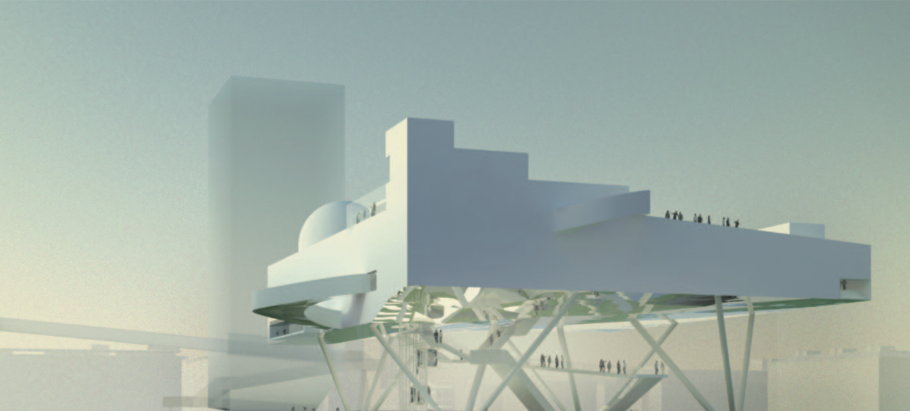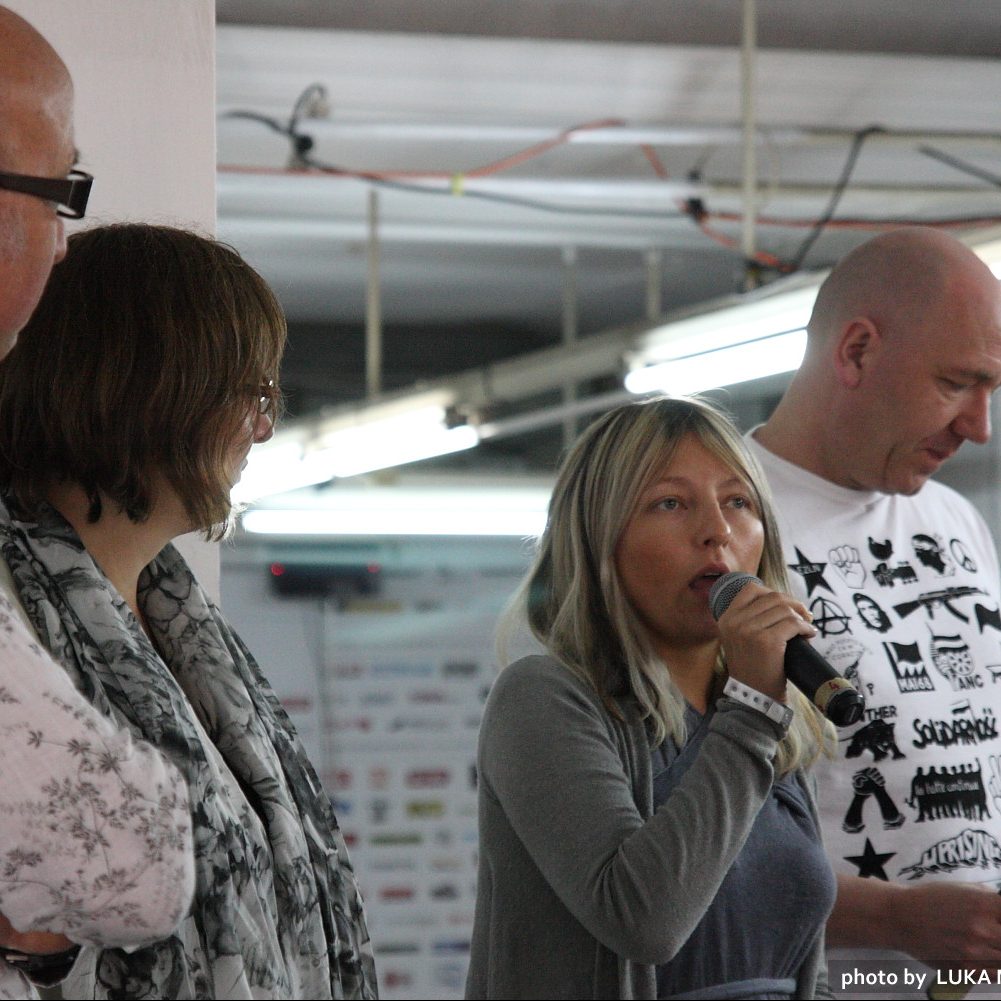
INTERVIEW WITH WOLFGANG TSCHAPELLER & ALEKSANDRA DRECUN – POLITIKA
A New Building for the Block 39 in New Belgrade: The Center for the Promotion of Science
BACK TO THE FUTURE
One of the sensations of this year’s Belgrade Design Week is the project of the Center for the Promotion of Science. The author of the original concept, who was unanimously declared winner of the international competition, is the avant- garde Austrian architect Wolfgang Tschapeller. The building will be completely different from anything we have seen in this region. It will be a kind of national bank of scientific knowledge, with the goal to make it more appealing to the general public, to provide opportunities for training and specialization, support social and economic development, in cooperation with the Ministry of Education and the Ministry of Science and Technology.
If all goes according to plan, the Center will be completed within two years, at the Block 39 in New Belgrade, near the Faculty of Dramatic Arts. This project extends a cultural core of the neighborhood, scientists and students will be given the opportunity to explore and to study, and the general public to stay informed, to experiment and socialize in a new public space.
Wolfgang Tschapeller has offered New Belgrade a fresh vision: a structure which “floats in the air” – completely lifted from the ground, standing on thin pillars.
“Buildings usually stand on the ground, but in this case we have a building that does not: the building with the pillars so thin that they make it look as
if it floats above the surface. Symbolically, it is associated with the human age-old dream of flying, of separation from the ground. This is the basic idea”, says Tschapeller.
In addition to these basic structural features of the building, the bottom of its base will be covered in mirrors, showing the reflection of the lawn
and the visitors below, creating an extraordinary visual effect. Another important issue related to this project is the relationship between public and private space.
“As soon as an object is separated from the ground, the ground becomes free and a larger portion of public space becomes available. In this case, that space will not only be on the ground: the Center will also have a large roof terrace which the visitors will be able to reach by stairs. Thus, urban areas will be made available to everyone: imagine, one day, children coming to picnic on the roof of the Centre for the Promotion of Science. Basically, that was the original concept of New Belgrade: large public areas that are not privately owned. Large open space is now slowly getting smaller, because this part of the city is becoming ever more densely populated. Now we wish to bring back that initial idea and create an abundance of open spaces that are available to everyone. In order to move towards the future, one must go back to the beginning of the historical vision of New Belgrade. If it gets materialized, then this will eventually truly be the city of the future, the city of the XXI century. This is really about connecting the past and the future”, the architect said.
When the process of construction of the Center is completed, it will be open to general public. It will be an interactive way to present scientific topics – permanent and temporary exhibitions in specially equipped exhibition spaces, scientific workshops, laboratories and auditoriums, planetarium, science garden, spaces for lectures, debates, experiments, for visitors of all ages, especially for the youngest. There will be a room for scientific conferences and seminars, as well as connection to the Nano Center, which will be built simultaneously. This facility is the absolute novelty in our region and this center is the first institution of its kind in the Western Balkans.
“The Centre has already started operating: we are organizing promotions, lectures, preparing publications to promote science. The challenge ahead of us is for this Center to become a place which stimulates creativity and expands our horizons, which is particularly important in these times when there are many priorities, but insufficient resources. We invite you to join us in achieving that goal” said the director of the Centre for the Promotion of Science, Aleksandra Drecun.
The idea is to encourage innovation and creative individuals, and to promote Belgrade as a destination. This project has the potential not only to encourage the development of science, but to be a part of a wider process of re-branding of Serbia.
Trackback from your site.
